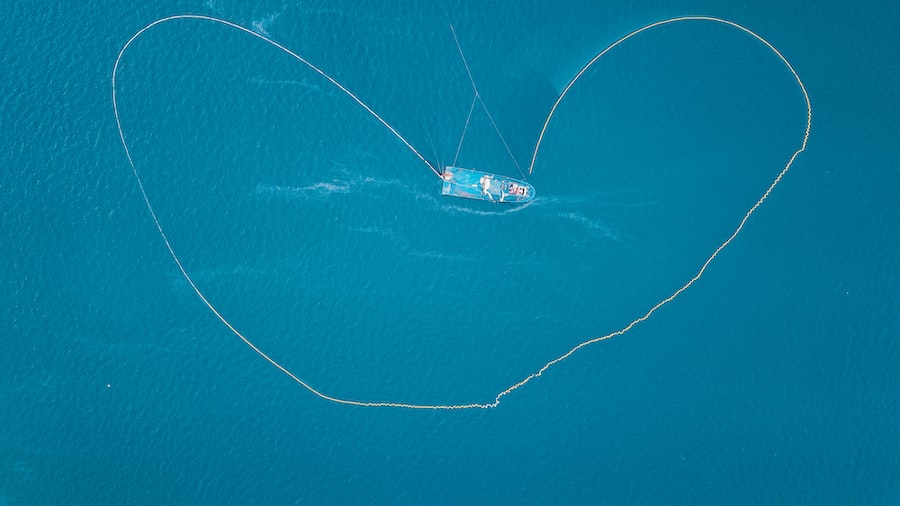Introduction to Blue Ocean Strategy and its Importance in Business
Blue Ocean Strategy is a concept that was introduced by W. Chan Kim and Renée Mauborgne in their book “Blue Ocean Strategy: How to Create Uncontested Market Space and Make the Competition Irrelevant.” It refers to a strategic approach that focuses on creating new market spaces, rather than competing in existing ones. The goal of Blue Ocean Strategy is to find untapped market opportunities where competition is minimal or non-existent, allowing companies to achieve sustainable growth and profitability.
The importance of Blue Ocean Strategy in business cannot be overstated. In today’s highly competitive business environment, companies are constantly looking for ways to differentiate themselves from their competitors and gain a competitive advantage. Blue Ocean Strategy provides a framework for companies to do just that. By identifying and creating new market spaces, companies can avoid the intense competition that exists in traditional markets and instead focus on capturing untapped demand.
The concept of Blue Ocean Strategy has its roots in the field of strategy and innovation. It was first introduced by Kim and Mauborgne in an article published in Harvard Business Review in 2004. Since then, it has gained widespread recognition and has been adopted by numerous companies across various industries. The success stories of companies that have implemented Blue Ocean Strategy have further solidified its importance in business.
Understanding the Concept of Red Ocean and Blue Ocean Strategies
Red Ocean Strategy refers to the traditional approach to business, where companies compete in existing market spaces. In a red ocean, competition is fierce, and companies are constantly battling for market share. This often leads to price wars, commoditization of products or services, and shrinking profit margins.
On the other hand, Blue Ocean Strategy focuses on creating new market spaces where competition is minimal or non-existent. In a blue ocean, companies have the opportunity to differentiate themselves and capture untapped demand. This allows them to achieve higher profit margins and sustainable growth.
There are several examples of companies that have adopted Red Ocean and Blue Ocean Strategies. One example of a company that has successfully implemented a Red Ocean Strategy is Coca-Cola. Coca-Cola competes in the highly competitive beverage industry, where it faces intense competition from other soft drink manufacturers. To stay ahead, Coca-Cola focuses on product differentiation, marketing campaigns, and brand loyalty.
In contrast, an example of a company that has adopted a Blue Ocean Strategy is Cirque du Soleil. Cirque du Soleil created a new market space by combining elements of traditional circus acts with theater and music. By doing so, they were able to attract a new audience and differentiate themselves from traditional circuses. This allowed them to achieve tremendous success and become a global entertainment phenomenon.
Key Principles of Blue Ocean Strategy and Their Application in Business
Blue Ocean Strategy is based on six key principles that guide companies in creating new market spaces. These principles are:
1. Reconstruct Market Boundaries: This principle involves identifying and creating new market spaces by challenging industry boundaries. Companies can do this by looking beyond their existing industry and exploring adjacent industries or completely new industries.
2. Focus on the Big Picture: Instead of focusing on incremental improvements, companies should focus on creating value for customers through innovation. This involves looking at the big picture and considering all aspects of the business, including the product or service, delivery channels, customer experience, and pricing.
3. Reach Beyond Existing Demand: Companies should not only focus on existing customers but also look for ways to attract non-customers. This involves understanding the needs and preferences of non-customers and developing products or services that meet their needs.
4. Get the Strategic Sequence Right: Companies should ensure that they have a clear strategy in place before implementing it. This involves understanding the market dynamics, identifying the right target audience, developing a compelling value proposition, and aligning the organization to deliver on the strategy.
5. Overcome Key Organizational Hurdles: Implementing Blue Ocean Strategy often requires significant changes within the organization. Companies need to overcome key organizational hurdles, such as resistance to change, lack of resources, and internal politics, to successfully implement the strategy.
6. Build Execution into Strategy: Execution is crucial for the success of any strategy. Companies need to ensure that their strategy is executable and that they have the necessary resources, capabilities, and processes in place to execute it effectively.
To apply Blue Ocean Strategy in business, companies need to start by conducting a thorough analysis of their industry and identifying untapped market opportunities. This involves understanding the needs and preferences of customers, as well as the key trends and dynamics in the industry. Once these opportunities are identified, companies can develop innovative products or services that meet these needs and differentiate themselves from competitors.
The benefits of using Blue Ocean Strategy in business are numerous. By creating new market spaces, companies can avoid intense competition and achieve higher profit margins. They can also attract new customers and expand their customer base. Additionally, Blue Ocean Strategy allows companies to differentiate themselves from competitors and build a strong brand identity. This can lead to increased customer loyalty and long-term success.
The Importance of Value Innovation in Blue Ocean Strategy
Value innovation is a key concept in Blue Ocean Strategy. It refers to the creation of new value for customers by simultaneously reducing costs and increasing differentiation. Value innovation allows companies to break the trade-off between differentiation and low cost, which is often seen in traditional competitive strategies.
In Blue Ocean Strategy, value innovation is used to create a leap in value for customers, rather than incremental improvements. This involves identifying what customers value most and finding innovative ways to deliver that value at a lower cost. By doing so, companies can create new market spaces where competition is minimal or non-existent.
There are several examples of companies that have used value innovation in Blue Ocean Strategy. One example is Southwest Airlines. Southwest Airlines revolutionized the airline industry by offering low-cost, no-frills flights. By eliminating unnecessary services and focusing on efficiency, Southwest Airlines was able to offer lower fares than its competitors. This allowed them to attract a new segment of customers who were price-sensitive and willing to forgo certain amenities in exchange for lower prices.
Another example is Apple. Apple has consistently used value innovation to differentiate itself from competitors and create new market spaces. For example, when Apple introduced the iPod, it revolutionized the music industry by offering a portable music player that was easy to use and had a sleek design. By combining innovative technology with a user-friendly interface, Apple was able to create a new market space and dominate the MP3 player market.
The Role of Customer Insights and Market Research in Blue Ocean Strategy

Customer insights and market research play a crucial role in Blue Ocean Strategy. They provide companies with valuable information about customer needs, preferences, and behaviors, which can help them identify untapped market opportunities and develop innovative products or services.
Understanding customer insights involves gathering data about customers’ needs, desires, pain points, and aspirations. This can be done through various methods, such as surveys, interviews, focus groups, and observation. By analyzing this data, companies can gain valuable insights into what customers value most and what they are willing to pay for.
Market research involves gathering data about the overall market dynamics, including industry trends, competitor analysis, and market size. This information can help companies identify potential market gaps or unmet needs that can be addressed through Blue Ocean Strategy.
There are several examples of companies that have used customer insights and market research in Blue Ocean Strategy. One example is Netflix. Netflix used customer insights to identify the growing demand for streaming video content. By conducting market research and analyzing customer data, Netflix realized that customers were increasingly moving away from traditional DVD rentals and were looking for a more convenient and affordable way to access movies and TV shows. This led to the development of their streaming service, which revolutionized the entertainment industry.
Another example is Airbnb. Airbnb used customer insights to identify the growing demand for unique and authentic travel experiences. By conducting market research and analyzing customer data, Airbnb realized that many travelers were looking for alternatives to traditional hotels and were interested in staying in local homes or apartments. This led to the development of their platform, which allows homeowners to rent out their properties to travelers. Airbnb’s success can be attributed to their ability to understand customer needs and develop a solution that meets those needs.
Analyzing Successful Case Studies of Companies that Adopted Blue Ocean Strategy
There are several successful case studies of companies that have adopted Blue Ocean Strategy and achieved significant success. These case studies provide valuable insights into how companies can implement Blue Ocean Strategy and the benefits they can achieve.
One example is Cirque du Soleil, as mentioned earlier. Cirque du Soleil created a new market space by combining elements of traditional circus acts with theater and music. By doing so, they were able to attract a new audience and differentiate themselves from traditional circuses. Cirque du Soleil’s success can be attributed to their ability to create a unique and memorable experience for their audience, as well as their focus on high-quality performances and artistic creativity.
Another example is Nintendo. Nintendo revolutionized the gaming industry by introducing the Wii console, which targeted a new segment of casual gamers. While other gaming consoles focused on high-end graphics and complex gameplay, Nintendo recognized that there was a large untapped market of non-gamers who were intimidated by traditional gaming consoles. The Wii console offered a simple and intuitive gaming experience that appealed to this new segment of customers. Nintendo’s success can be attributed to their ability to identify an unmet need in the market and develop a product that addressed that need.
A third example is Tesla. Tesla disrupted the automotive industry by introducing electric vehicles that offered superior performance and sustainability. While other automakers focused on traditional gasoline-powered vehicles, Tesla recognized the growing demand for electric vehicles and the need for a sustainable alternative to fossil fuels. Tesla’s success can be attributed to their ability to develop innovative technology, build a strong brand, and create a loyal customer base.
These case studies highlight the importance of identifying untapped market opportunities, understanding customer needs, and developing innovative products or services that meet those needs. They also demonstrate the benefits that companies can achieve by adopting Blue Ocean Strategy, such as differentiation, increased market share, and higher profit margins.
Overcoming Challenges and Obstacles in Implementing Blue Ocean Strategy
Implementing Blue Ocean Strategy is not without its challenges and obstacles. Companies often face resistance to change, lack of resources, and internal politics when trying to implement a new strategy. However, there are ways to overcome these challenges and obstacles.
One common challenge is resistance to change. Employees may be resistant to new ideas or may be comfortable with the status quo. To overcome this challenge, companies need to communicate the benefits of Blue Ocean Strategy and involve employees in the process. This can be done through training programs, workshops, and open communication channels. By involving employees in the strategy development process and addressing their concerns, companies can increase buy-in and support for the new strategy.
Another challenge is a lack of resources. Implementing Blue Ocean Strategy often requires significant investments in research and development, marketing, and infrastructure. To overcome this challenge, companies need to prioritize their resources and allocate them strategically. This may involve reallocating resources from existing projects or seeking external funding through partnerships or investors.
Internal politics can also be a significant obstacle in implementing Blue Ocean Strategy. Different departments or individuals may have conflicting interests or agendas, which can hinder the implementation process. To overcome this challenge, companies need to foster a culture of collaboration and teamwork. This can be done through cross-functional teams, clear communication channels, and a shared vision and purpose.
There are several examples of companies that have overcome challenges and obstacles in implementing Blue Ocean Strategy. One example is Apple. When Apple introduced the iPhone, it faced significant resistance from the telecommunications industry, which was dominated by established players such as Nokia and Motorola. However, Apple was able to overcome these challenges by focusing on innovation, user experience, and design. The success of the iPhone can be attributed to Apple’s ability to create a new market space and differentiate itself from competitors.
Measuring Success and Evaluating Performance in Blue Ocean Strategy
Measuring success and evaluating performance is crucial in Blue Ocean Strategy. Companies need to track their progress and determine whether their strategy is achieving the desired results. There are several key performance indicators (KPIs) that can be used to measure success in Blue Ocean Strategy.
One key KPI is market share. Companies can track their market share to determine whether they are gaining or losing market share in their target market. Increasing market share is often a sign of success in Blue Ocean Strategy, as it indicates that the company is capturing untapped demand and attracting new customers.
Another key KPI is customer satisfaction. Companies can measure customer satisfaction through surveys, feedback forms, or online reviews. High customer satisfaction indicates that the company is delivering value to customers and meeting their needs.
Profitability is another important KPI in Blue Ocean Strategy. Companies need to track their profitability to determine whether their strategy is generating sustainable growth and profitability. Increasing profit margins or achieving higher returns on investment are often indicators of success in Blue Ocean Strategy.
Other KPIs that can be used to measure success in Blue Ocean Strategy include brand awareness, customer loyalty, and employee engagement. These KPIs provide insights into the company’s reputation, customer retention, and internal culture, which are all important factors in achieving long-term success.
There are several examples of companies that have measured success and evaluated performance in Blue Ocean Strategy. One example is Amazon. Amazon tracks various KPIs, such as customer satisfaction, sales growth, and market share, to determine the success of its Blue Ocean Strategy. By continuously monitoring these KPIs, Amazon can make data-driven decisions and adjust its strategy accordingly.
The Future of Blue Ocean Strategy in Business and its Potential Impact
The future of Blue Ocean Strategy in business is promising. As competition continues to intensify in traditional markets, companies are increasingly looking for ways to differentiate themselves and capture untapped demand. Blue Ocean Strategy provides a framework for companies to do just that.
One future trend in Blue Ocean Strategy is the use of technology and digitalization. Technology has the potential to create new market spaces and disrupt traditional industries. Companies that can leverage technology to create innovative products or services will have a significant advantage in the market.
Another future trend is the focus on sustainability and social responsibility. Consumers are becoming more conscious of the environmental and social impact of their purchasing decisions. Companies that can develop sustainable and socially responsible solutions will be able to attract a new segment of customers and differentiate themselves from competitors.
The potential impact of Blue Ocean Strategy on business is significant. By creating new market spaces, companies can achieve sustainable growth and profitability. They can also contribute to economic development by creating jobs and driving innovation. Additionally, Blue Ocean Strategy has the potential to disrupt traditional industries and create new opportunities for entrepreneurs and startups.
However, there are some potential drawbacks to consider. One major concern is the potential for job displacement. As AI and automation technologies continue to advance, there is a risk that many jobs could be replaced by machines. This could lead to unemployment and economic inequality, as certain industries and occupations become obsolete. Additionally, there are ethical concerns surrounding AI, such as privacy issues and the potential for bias in decision-making algorithms. It is important to carefully consider these drawbacks and develop strategies to mitigate their impact as we continue to integrate AI into various aspects of society.



